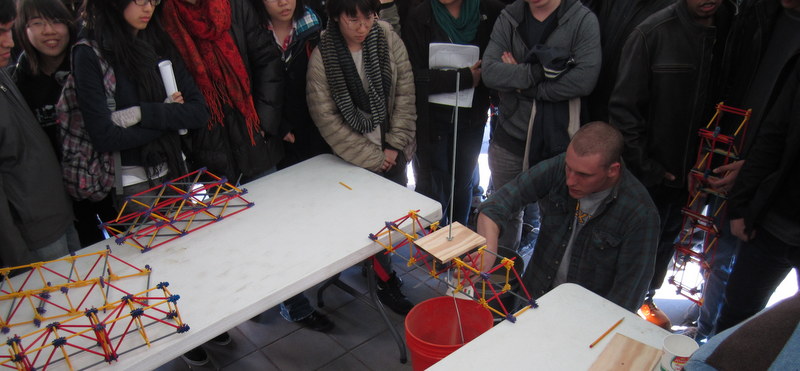
The Learning Bridge
Location: Tacony, Philadelphia, PA and Palmyra, NJ
Dates: 2010-ongoing
PIs: A. E. Aktan, F. L. Moon
Executive Summary
Many agencies, institutions and professional organizations such as the ASCE have expressed an urgent need for systemic reform of civil engineering education. Meanwhile the society is increasingly depending on civil engineers for solving daunting problems related to population explosion, shrinking natural resources, increasing energy demands, environmental protection and the performance of our critical infrastructures. The Learning Bridge Project aims to transfer a bridge into a living laboratory for project based learning with the goal of better understanding engineered systems in the real world as well as the interplay among the various systems that make up large infrastructure. Additionally, The Learning Bridge Project seeks to educate the public.
Project Description
The Tacony-Palmyra Bridge was chosen for transformation into a field laboratory for the Learning Brdige. Tacony-Palmyra proves an ideal site for the project based learning. The bridge’s historic significance, its vital role in regional transportation, the proximity to wilderness areas and the various styles of bridges—truss, arch, and bascule—provide ample opportunity for a wide variety of individual studies as well as fertile grounds for studying the interplay between systems.
Several projects have been completed under the aegis of The Learning Bridge. In the natural realm, Drexel has undertaken an onsite study of storm-water runoff quality and quantity draining from the deck of the bridge. The storm-water runoff runs into a cistern equipped with sensors that continuously measure electrical conductivity,pH, temperature, and volume of the deck runoff. In order to evaluate the feasibility of mitigating the impact of bridge deck runoff on the local environmental systems, two rain gardens have been designed and constructed under the bridge. These gardens will serve to measure and compare the effect of irrigation from the bridge runoff and irrigation from natural precipitation.
In the management arena, Drexel is developing an information system that will maintain the plans, drawings, records, reports and all other existing hard-copy documentation, in addition to historian interviews in an electronic library is in progress. 3D CAD models of the bridge and its computer models for structural analysis have been created as reported previously. When completed, the information management system with its electronic library will offer wireless access during bridge inspections, and will permit virtual fly-through of the entire bridge, including past photographs and data on the mechanical and constructed components as well as river-soil-piles-and-foundations.
In order to further the goal of education, The Learning Bridge hosts students from specialized, magnet, and local area high schools to spend a day for learning about civil and structural engineering. A full-day workshop starts with an introductory lecture that describes the history of civil engineering, the difference between science and engineering, the history of the Tacony-Palmyra Bridge, and basic concepts such as loading mechanisms and load paths, tension and compression members, failure modes, etc. There is a walking tour of the bridge when graduate and undergraduate students describe the bridge and its components. Finally, there are three education modules focused around team competition: a design module where teams of students get to build their own bridge from K’nex pieces using the concepts illustrated on the real life learning bridge; an analysis module where the students use load sensors on a PASCO model of the T-P bridge to see how load paths change as a truck travels on a bridge; and finally a construction module where the students explore construction by using their hands to build a former Drexel fabricated steel bridge that was designed for ASCE-AISC Steel-Bridge Competition.. The day ends in a finale where the K’nex bridges the students have fabricated are tested to find out how much load they can carry and the efficiency of their design.






































